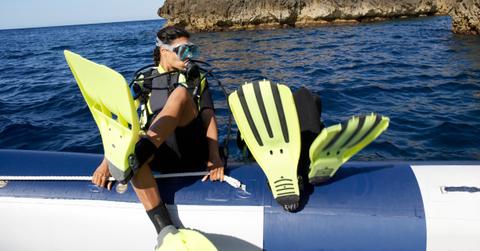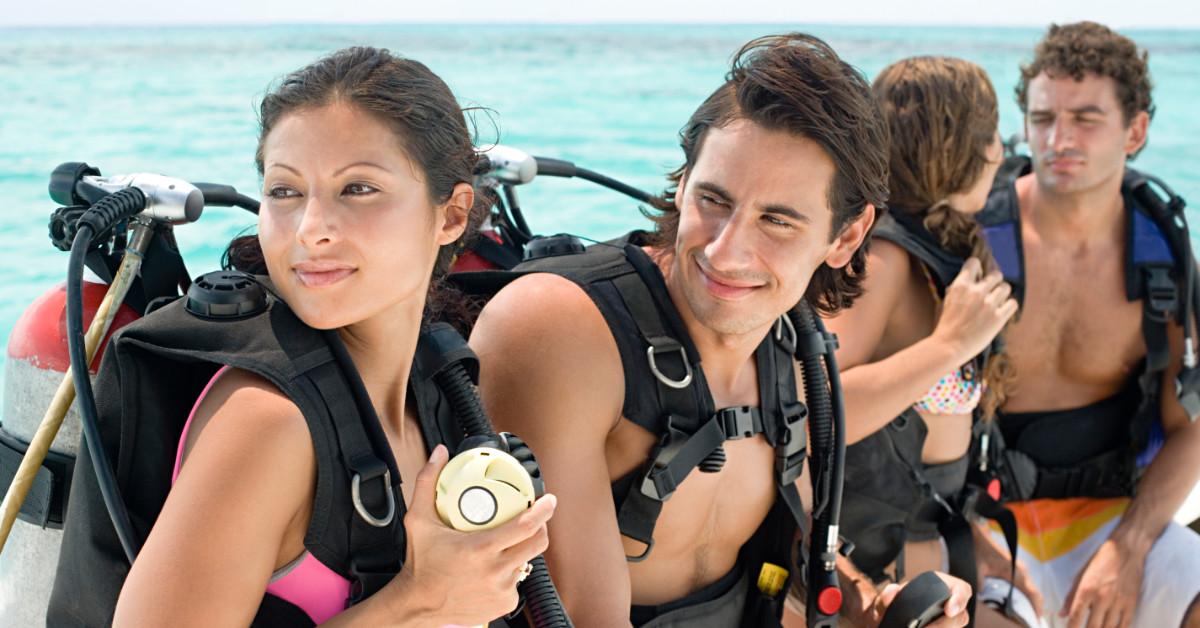Scuba Divers Have Good Reasons for Falling Backward Into the Water
Published Aug. 13 2022, 2:13 p.m. ET

Even if you’ve never gone scuba diving yourself, you’ve undoubtedly seen scuba divers in movies and TV shows, dropping off the side of boats back first. So, why do scuba divers fall backward?
As the scuba-gear retailer Underwater Kinetics reports in a blog post on the topic, there’s a “dad joke”answer to this question: Scuba divers fall backwards because if they fell forward, they’d end up in the boat! But jokes aside, there are multiple reasons why it makes sense for scuba divers to take the plunge backward in what’s known as the “back roll entry.”
The back roll entry helps diving gear stay in place.

According to Underwater Kinetics, the back roll entry helps a diver keep their gauges and regulator stay in place. If they were to dive in face-first, the impact of the water might knock the gear out of place or even loose. “By diving backwards, assuming you do it correctly, you ensure that you don’t enter the water without equipment,” the retailer notes.
It also eases a diver’s entry into the water.
The back roll entry is also easier on the body, especially because scuba divers are laden with a lot of extra weight, especially with the oxygen tank on their backs. By diving in back-first, you’re letting the tank lead the way and avoiding possible injury.
“The impact of a feet-first dive is hard on your joints and can cause an injury if you don’t hit the water accurately,” A-1 Scuba & Travel Aquatic Center of Littleton, Colo., explains in a blog post. “Similarly, a headfirst dive can cause an injury from the impact or from loose gear.”
And it keeps smaller boats stable on the water.
Another practical reason for the back roll entry: It keeps smaller boats from rolling side to side as divers stand on the gunwale, the top edge of the hull. “While these boats may have a low center of gravity, a few divers standing on the gunwale will shake things up on board,” Underwater Kinetics tells readers. “By entering the water with a backwards fall, you minimize this rocking motion for everyone else on board.”
There are other entry techniques, too.
Scuba divers don’t always dive in backward with the back roll entry, however. You may see divers taking using the “giant stride” method on larger boats and yachts specially outfitted for scuba diving, which have stable dive platforms. “Keep a hand on your regulator and mask as you prepare for a giant stride,” A-1 Scuba & Travel advises. “Check the water for any obstacles before stepping out into the water and be sure your step is large enough to avoid hitting the side of the boat with your tank.”
Then there’s the “seated entry” method, which is involves sitting on the gunwale. “Put your legs over the side and hold on to the side of the boat with your arms,” says A-1. “Turn around, so you’re facing the boat as you lift yourself over the edge.”
Happy diving, folks!